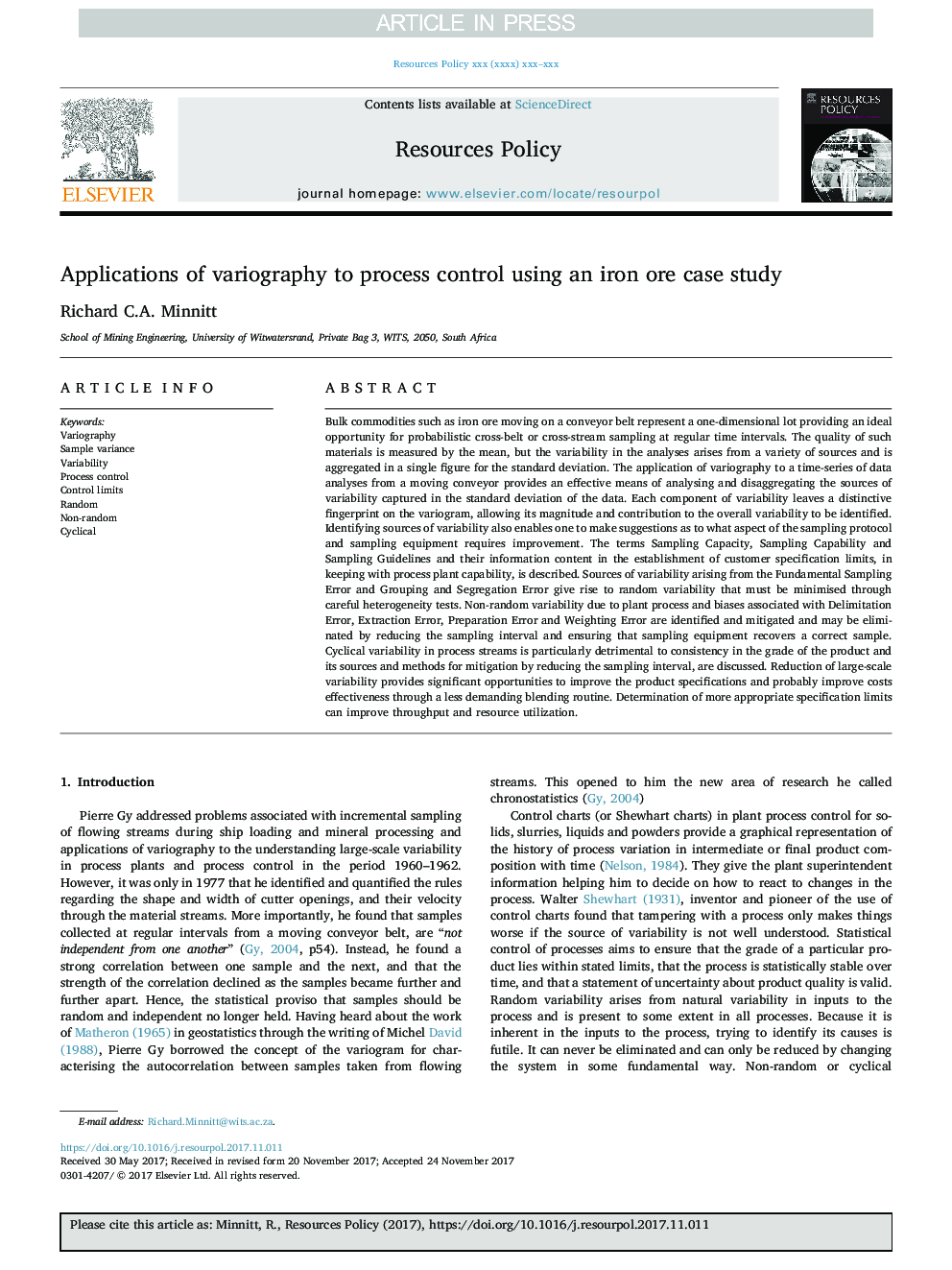| Article ID | Journal | Published Year | Pages | File Type |
|---|---|---|---|---|
| 7387575 | Resources Policy | 2018 | 14 Pages |
Abstract
Bulk commodities such as iron ore moving on a conveyor belt represent a one-dimensional lot providing an ideal opportunity for probabilistic cross-belt or cross-stream sampling at regular time intervals. The quality of such materials is measured by the mean, but the variability in the analyses arises from a variety of sources and is aggregated in a single figure for the standard deviation. The application of variography to a time-series of data analyses from a moving conveyor provides an effective means of analysing and disaggregating the sources of variability captured in the standard deviation of the data. Each component of variability leaves a distinctive fingerprint on the variogram, allowing its magnitude and contribution to the overall variability to be identified. Identifying sources of variability also enables one to make suggestions as to what aspect of the sampling protocol and sampling equipment requires improvement. The terms Sampling Capacity, Sampling Capability and Sampling Guidelines and their information content in the establishment of customer specification limits, in keeping with process plant capability, is described. Sources of variability arising from the Fundamental Sampling Error and Grouping and Segregation Error give rise to random variability that must be minimised through careful heterogeneity tests. Non-random variability due to plant process and biases associated with Delimitation Error, Extraction Error, Preparation Error and Weighting Error are identified and mitigated and may be eliminated by reducing the sampling interval and ensuring that sampling equipment recovers a correct sample. Cyclical variability in process streams is particularly detrimental to consistency in the grade of the product and its sources and methods for mitigation by reducing the sampling interval, are discussed. Reduction of large-scale variability provides significant opportunities to improve the product specifications and probably improve costs effectiveness through a less demanding blending routine. Determination of more appropriate specification limits can improve throughput and resource utilization.
Related Topics
Physical Sciences and Engineering
Earth and Planetary Sciences
Economic Geology
Authors
Richard C.A. Minnitt,
